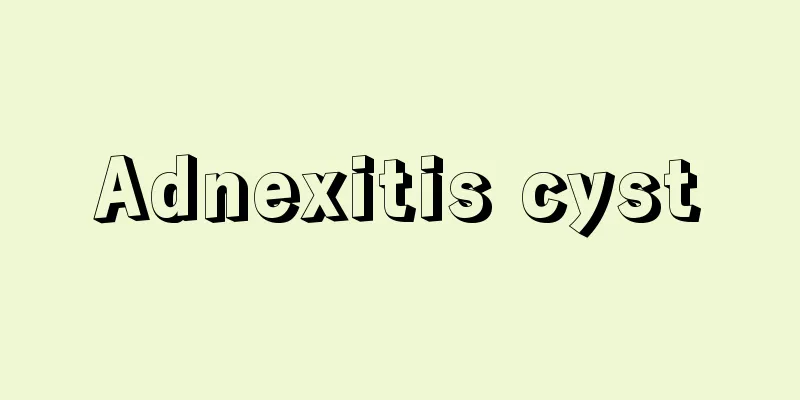Adnexitis cyst

|
The appendages are a very important part of the female reproductive system. They are located near the uterus and ovaries and are the basis for maintaining the healthy functioning of the reproductive system. Modern women face greater health pressure in their lives and are prone to reproductive system diseases, which cause great damage to women's fertility and health. For example, adnexitis cyst is one of the common diseases. What is adnexitis cyst? Adnexitis is a common and frequently occurring disease among women. Some women are not very clear about the symptoms of adnexitis. Its symptoms are very easy to see. If a woman finds that she has the following symptoms, she must go to the hospital for examination in time. There are two types of adnexitis: acute and chronic 1. Acute adnexitis The main symptom is acute lower abdominal pain accompanied by fever. During gynecological examination, there is obvious tenderness and rebound pain in the adnexal area. Routine blood tests can show an increase in white blood cell count and a significantly increased neutrophil ratio. Symptoms of adnexitis: If acute adnexitis is not treated promptly or thoroughly, it may turn into chronic adnexitis. 2. Chronic adnexitis There are abdominal pains of varying degrees. Chronic inflammation recurs over time, causing pelvic congestion, connective tissue fibrosis, and adhesion of pelvic organs. Patients experience symptoms such as lower abdominal distension, pain, and lumbar pain, which may be mild or severe, accompanied by increased vaginal discharge, low back pain, menstrual disorders, etc., and often worsen during menstruation or after fatigue. During gynecological examination, there is tenderness, thickening, or a tender mass in the adnexal area on both sides or one side, and the white blood cell count is elevated or normal. Some symptoms may not be very obvious sometimes, but because the fallopian tubes and ovaries are adjacent to each other, it is difficult to distinguish when inflammation occurs. In particular, chronic inflammation of the fallopian tubes can lead to fibrosis, thickening and blockage of the fallopian tubes over time, and may also cause adhesion to surrounding tissues. If both ends of the fallopian tube are blocked, hydrosalpinx may form, and the accumulated water will penetrate into the ovaries that are adhered together, forming a fallopian tube ovarian cyst. It can easily cause infertility or ectopic pregnancy. |
Recommend
Can umbilical cord knots be detected by ultrasound?
After a pregnant woman becomes pregnant, the fetu...
Is brown at the end of period considered clean?
Women during menstruation will have some concerns...
How to lighten hereditary freckles
Hereditary freckles are not necessarily suffered ...
Do you need to use antibiotics immediately when you have Mycoplasma pneumoniae infection? Here comes the list of scientific rumors for October →
1. Does Mycoplasma pneumoniae infection require i...
How to regulate the deficiency of qi and blood after childbirth?
I believe that many families will be very happy a...
What are the uterine ligaments?
The uterus contains not only cervical membrane an...
Can I take Metoclopramide while breastfeeding?
It is best not to take any medication during brea...
What to eat during 5 months of pregnancy is good for the fetus
In the fifth month of pregnancy, nutrition should...
There is always white stuff on the vulva
Reproductive health means healthy women. Due to v...
The efficacy and role of folic acid tablets
Most pregnant women will experience some abnormal...
What to eat during confinement to increase milk production
The period after giving birth is the most importa...
Can I have a medical abortion when I am 48 months pregnant?
Because contraceptive measures were not taken or ...
When will the Lelecha Coca-Cola joint brand be released? Is the Lelecha Coca-Cola joint brand delicious?
Lelecha and Coca-Cola have collaborated? My Lelec...
What to do if a pregnant woman has a persistent fever
Fever in pregnant women has a great impact on the...
Picture of 6-month-old swollen vulva
Many pregnant women experience swelling of the vu...









